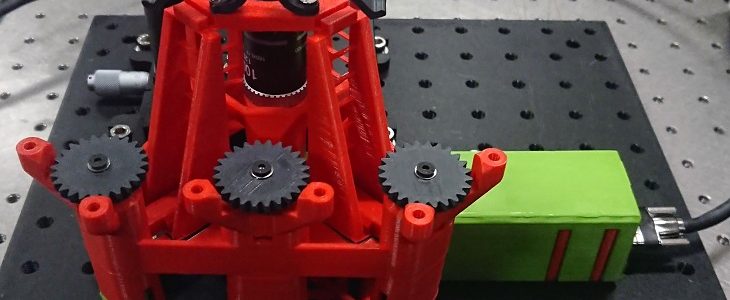A new paper shows the practicality of using Super Resolution Radial Fluctuation (SSRF) on an OpenFlexure Microscope. SSRF microscopy is a form of Super Resolution microscopy that relies on a post-processing method to generate a radiality map for each frame. This map is used to look for temporal correlations across frames to create an image of better resolution.
This process requires a high numerical-aperture (NA) lens (typically NA>0.8) and a very stable microscope. Stephen D. Grant , Gemma Cairns, Jordan Wistuba and Brian Patton have written a paper in which they show SSRF results with a resolution of 115 nm, by using the terrific OpenFlexure 3D printable microscope.
It’s great to see how widely adopted the clever OpenFlexure design has become. The paper makes some minor modifications to the design described in the Hardware Design section, and you can get the STL files for the custom parts at the University of Glasgow Strathclyde website.
The $1200 claim at the start of the paper is eye-popping, but not very realistic. Or so we thought… We were super dubious about this number, but when you break it down:
The 3D printable microscope base can be made for just $100
The 100x, 1.25 NA, oil objective used in this paper costs $230
The 4.5 mW 532 nm laser costs $172
The f=250 mm plano-convex lens costs $32
The silver mirror costs $53
The 650nm longpass filter costs $174
And the IDS 3060CP-M-GL camera or equivalent costs ~$1000.
That’s just $1761, which is pretty shockingly close to the claim of $1200. Cool!
